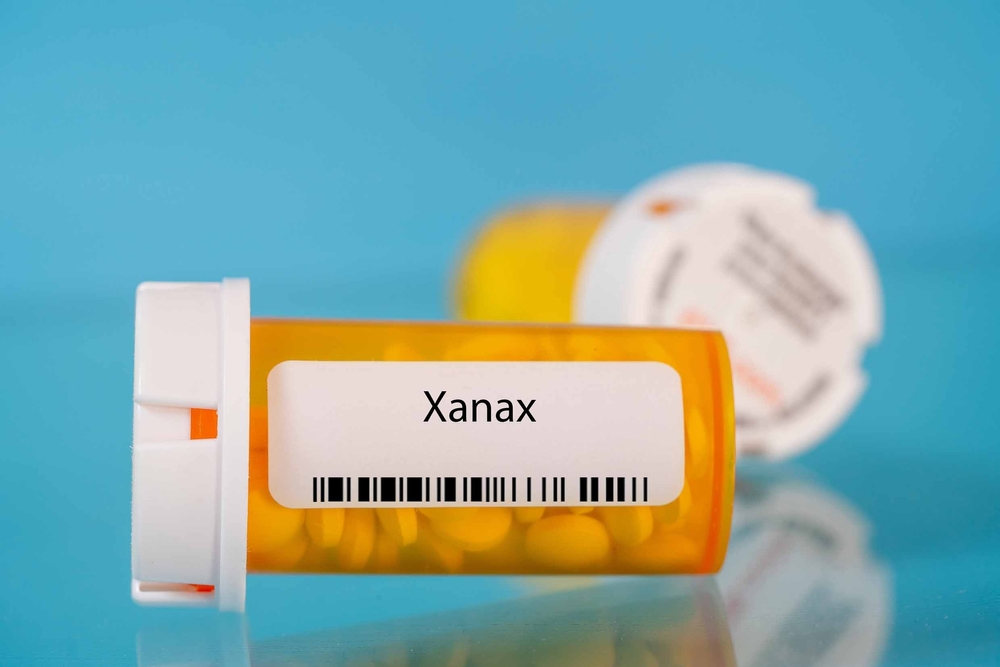
Written by:

Medically Reviewed by:
Last Updated:
August 13th, 2025
Xanax Addiction Treatment | Xanax Detox and Rehab
At Primrose Lodge, we understand how quickly a Xanax dependence can develop. Our Xanax rehab programme is designed to help you untangle that reliance with care, structure and the right support.
What is Xanax rehab?
Xanax rehab is a structured treatment programme that helps you step away from dependency on this fast-acting benzodiazepine. Prescribed to ease anxiety and panic attacks, Xanax (also known by its generic name alprazolam) works quickly, but rapid relief can come at a cost.
Because Xanax acts fast and wears off just as quickly, it’s common to find yourself reaching for it more often than prescribed. Over time, your body and mind begin to rely on that calming effect. What was once occasional becomes routine, and from there, it’s not a huge leap to feeling like you can’t manage without it.
Do I need treatment for Xanax addiction?
Dependency doesn’t always announce itself loudly. Sometimes, it builds slowly and quietly until it’s part of your daily rhythm. You may have started taking Xanax exactly as prescribed but noticed the dose doesn’t work like it used to or feel uneasy when you haven’t taken it.
Some common signs that Xanax treatment may be needed include:
- Feeling anxious or panicked between doses
- Increasing your dose without speaking to your doctor
- Taking it earlier in the day just to feel normal
- Hiding your usage or feeling uncomfortable discussing it
- Struggling to sleep or think clearly without it
If you’ve started to notice these patterns, even just occasionally, it could be time to step back and ask what’s really going on.
What happens during Xanax addiction treatment?
Xanax rehab at Primrose Lodge is tailored to help you feel safe, supported and understood, especially during the difficult early stages of withdrawal. At its core, treatment focuses on three key areas: physical recovery, emotional processing and long-term planning.
Your dose is tapered down gradually under supervision. Withdrawal symptoms can include:
- Rebound anxiety and panic attacks
- Insomnia and restlessness
- Muscle pain and body tension
- Nausea, sweating and shaking
- Mood swings, confusion or depersonalisation
You’ll be monitored throughout, and support is always available. Our staff are trained to spot even subtle signs of discomfort or distress and can adjust the pace of your taper accordingly. The goal is to help your body rebalance, not to push it to breaking point.
Treatment may include:
- One-to-one counselling to explore personal struggles and habits
- CBT and DBT to challenge anxious thinking and avoid relapse patterns
- Group therapy for connection and shared insight
- Holistic options such as breathwork, meditation or creative therapy to support emotional release
The aim isn’t to replace Xanax with another crutch. It’s to help you understand what you’ve been trying to cope with and introduce tools that support lasting change.
What happens after Xanax rehab?
Leaving rehab is a big step but it doesn’t mean you have to face everything alone. Our support continues well beyond your time at Primrose Lodge. With aftercare options, community connections and relapse prevention strategies, you’ll have a safety net in place to help you stay on track.
You don’t need to have it all figured out before you leave. What matters is that you know where to turn when you need help and that you’re not expected to hold everything together on your own.
What’s actually under control?
Xanax can give the impression that things are in hand. When the anxiety fades, even briefly, it feels like you’ve got some grip on the situation. But over time, that grip becomes more about keeping the effects going than actually feeling calm. You find yourself thinking ahead. When to take the next tablet, how long the last one will hold, whether there’s enough to get through the week.
It’s understandable. When something works, even for a while, you try to hold onto it. But that kind of control starts to feel narrow. You’re managing symptoms and getting through the day but not necessarily feeling better or more settled.
Rehab gives you room to step back and look at what’s been happening. It doesn’t try to replace Xanax with a different crutch. It helps you figure out what was driving the anxiety in the first place and how to manage it in a way that feels sustainable.
Why home detox from Xanax is rarely safe
Detoxing from Xanax at home might seem like the more private, manageable option, especially if you’ve already tried cutting down on your own. However, this drug has a fast and powerful effect on brain chemistry, and reducing it without support can be risky.
Some reasons home detox can be unsafe include:
- Rebound symptoms hitting harder than expected, especially at night
- Panic or agitation making you feel unsafe or overwhelmed
- Loss of sleep over multiple nights, pushing you into a mental fog
- Feeling tempted to take a higher dose again after a setback
- Not knowing whether symptoms are manageable or a medical emergency
In our care, these risks are recognised and responded to quickly. Withdrawal is planned around your body’s actual response, meaning the aim is to not just ‘ride it out’. You’re being guided through it, with the right adjustments made in real-time.
You’re not weak for needing help
If Xanax has become something you rely on more than you’d like, it doesn’t mean you’ve failed. It means something inside you is asking for support, and that’s worth paying attention to.
At Primrose Lodge, we offer a calm and caring place to begin again. You’ll have time to understand what’s been happening, space to recover, and guidance to help you move forward in a way that feels steady and real.
If you’re ready to take that first step, we’ll be here when the moment feels right.






